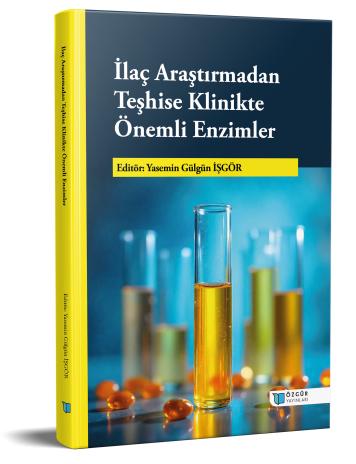
Antiseizure Drugs and Liver Enzymes: Clinical Significance and Interactions
Chapter from the book:
İşgör,
Y.
G.
(ed.)
2025.
Clinically Important Enzymes from Drug Research to Diagnosis.
Synopsis
Antiepileptic drugs (AEDs) are the cornerstone of epilepsy management; however, their extensive hepatic metabolism makes them prone to clinically significant interactions and hepatotoxicity. This review comprehensively evaluates the effects of AEDs on hepatic enzyme systems, particularly cytochrome P450 (CYP) and uridine diphosphate glucuronosyltransferase (UGT) pathways, and discusses the clinical implications of enzyme induction and inhibition. The liver plays a central role in the biotransformation of AEDs, where first-generation agents such as phenytoin, carbamazepine, and phenobarbital act as potent enzyme inducers, accelerating their own metabolism and that of co-administered drugs. In contrast, valproic acid exhibits a broad inhibitory effect on CYP2C9 and UGT, often resulting in elevated plasma concentrations of concomitant agents and increased risk of toxicity. New-generation AEDs including levetiracetam, lacosamide, and pregabalin demonstrate minimal hepatic metabolism and reduced drug–drug interaction potential, offering safer alternatives for patients with hepatic impairment. Elevations in liver enzymes such as alanine aminotransferase (ALT), aspartate aminotransferase (AST), alkaline phosphatase (ALP), gamma-glutamyl transferase (GGT), and bilirubin levels are key biochemical indicators of drug-induced liver injury. Therefore, routine liver function monitoring is essential to optimize therapy and ensure patient safety. Individualized treatment strategies based on hepatic function, age, and concomitant medication use are crucial to minimize adverse effects. In conclusion, understanding the pharmacokinetic profiles of AEDs and their interactions with hepatic enzymes is fundamental to achieving effective and safe seizure control. Regular biochemical monitoring and preference for newer AEDs with favorable hepatic safety profiles can significantly enhance therapeutic outcomes and reduce the burden of hepatotoxicity in epilepsy management.

